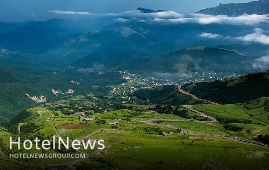
Countries are defined geographically and politically by their borders. Borders are fundamentally linked to tourism, as travel almost always entails crossing a political or another boundary, and borderlands are often the first or last areas of a country visited by travelers. Iran has a total of 5,894 kilometers of land borders with its neighbors Afghanistan, Armenia, Azerbaijan, Iraq, Pakistan, Turkey, and Turkmenistan. It also borders the Caspian Sea, Persian Gulf, and the Gulf of Oman. Several border cities dot Iran, owing to the vast size of the country’s land borders. The border cities of Iran, however, have limited tourist numbers due to their long distances from the country’s center, as well as the fact that they have not been properly promoted for foreign visitors. Here are some of the most beautiful border cities that have always gone unnoticed. Astara Astara, an Iranian border city and port, offers a wide range of tourist attractions. It is a major tourist and economic center on the west coast of the Caspian Sea, in the Gilan province. It is the last point of the border between Iran and Azerbaijan. Hakim Nezami School and Shindan Castle are two of the city’s historical sites. Astara Lagoon, Astarachay river, Qarasu river, Chelvand river, Darband river, Lavandvil river, and Espinas mountain are some of the city’s natural attractions. Among Iran’s border regions, Astara is the only area that has not experienced any tensions in the last 80 years, making it one of the safest. There is a great deal of tourism in this region because of the natural beauty and the weather. Jolfa Located in northwestern East Azarbaijan province, Jolfa borders the countries of Armenia and the Republic of Azerbaijan to the north. Jolfa has a semi-desert climate with warm summers and partly cold, moderate winters. The special importance of Jolfa is due to its historical monuments, strategic location, and appropriate geographical features, as well as its proximity to the commercial and industrial free zone of Aras (one of Iran’s most important commercial centers). Seyyed Abolqasem Nabati tomb, Duzal tower, Saint Stepanos Monastery, Nane Maryam church, ruined mill, Ushtibin village, St. Mary church, Baba Yaqub shrine, Ali Beyg fort, Jolfa historical bath and etc., are the most significant monuments and tourist attractions in this area. The region’s economy is fueled by the abundance of water resources, grasslands, and forest reserves, as well as its high potential for growth and industrialization. Minerals, agriculture, livestock, services, and scientific and training development also play an important role. There are a lot of cotton fields in this city, and weaving is the major activity of the locals. Jolfa people are Azeri and they speak in Turki Azerbaijani in their own local dialect. Maku Maku is located northwestern province of West Azarbaijan and enjoys a unique geographical and natural location. In a valley passes through which the Zangmar River divides Maku into two parts, the city is located 1294 meters above sea level. The city is surrounded by the Qarasu River and Turkey from the north, the Aras River (the Nakhchivan Autonomous Republic and Armenia) from the east, Khoy from the south, and Turkey from the west. Due to the surrounding stony mountains, this city has a moderate climate in winter and a hotter climate in summer. Mountainous landscapes, flourishing pastures, hot water springs, waterfalls, protected areas, and hunting grounds are some of the tourist attractions of this area. Maku is located on the main Tabriz-Bazargan road and has an excellent strategic location. Among the city’s most significant features is its role as the country’s only land border business and a link to Europe. As part of Maku’s economy, there is an industrial complex on the Maku-Bazargan road. Maku people rely on cross-border trade, agriculture, and animal husbandry for their livelihood. Zahedan The city of Zahedan is located in eastern Iran close to the Pakistani border. There are high lands around Zahedan, so it looks like a pit. The city is home to the mountains of Oshtoran Koh, Anjir Dan, Jico, Pir Khan, and Mulk-e Siah. Climates in this area are characterized by intense heat, aridity, and warmth. Zahedan consists of 4 parts: "Markazi", "Mir Jave", "Nosrat Abad", and "Korin", three cities, and eight rural districts. It is an academic, cultural, historical, and religious city that has a service structure. Zahedan enjoys a privileged geographic and border location which makes it an ideal place for trade with India thanks to its convenient location on the Afghanistan-Pakistan route. Pakistan’s railway enters Iran from the Mirjaveh border and Iran’s railway ends in this city. By being located among the Khorasan, Kerman, and Chabahar land routes, Zahedan is one of the Iran transit routes. Zahedan’s economy depends on agriculture in addition to trade. There are subterranean, spring, and river wells that supply the water this city needs. This area is full of color in its literature, clothing, and music. Zahedan’s cultural diversity results from migration. A good example of Baluch handicrafts is the klim bafi, needlework, seke dozi, and pottery. Zahedan architecture is influenced by Iran's ancient architecture due to its tropical weather. Baneh One of the border cities between Iran and Iraq, Baneh is located in the western province of Kordestan. The city is located 20 kilometers from the Iranian-Iraqi border, 60 kilometers southwest of Saqez and 70 kilometers southeast of Sardasht. The city is known for its large and natural oak forests. In 1984, Iraqi planes bombed Baneh and some nearby settlements during the Iran-Iraq war (1980-1988). Dul Arzan village, Shevi cave, Baneh Dam, Sorin complex are among the city’s tourist attractions, however, most of its reputation comes from its border malls and its status as a trade center. Local people speak Kurdish with Slemani accent.
Create: Jul 17, 2021 Edit: Jul 17, 2021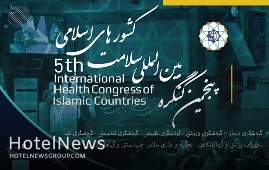
The 5th edition of the International Health Congress of Islamic Countries started in Tehran on Tuesday, aiming to find new opportunities for cooperation and development of health tourism among Muslim nations. Being held at IRIB International Conference Center, the congress is organized by the Health Tourism Development Center of Islamic Countries (HTDC) and supported by ministries, federations, institutions, and organizations in health tourism as well as private and governmental health service providers, the official website of the event announced. The three-day event has brought together seniors and experts from governmental and private sectors in the health tourism industry. The congress is being held in five specialized panel discussions of medical tourism, sports tourism, natural, wellness, and food tourism, medical and laboratory equipment, and nutrition and healthy food. The event started its official operations in 2015 with the aim of playing an effective role in developing economic relations and facilitating the networks between stakeholders in the health and health tourism industry. The developing health tourism industry is one of the most important fields of Iran’s travel sector, which is trying to prove its capabilities and capacities in attracting medical and health tourists to the country. Many domestic experts believe that medical tourism in Iran is a win-win opportunity both for the country and foreign patients, as they are offered affordable yet quality treatment services and the country gains considerable foreign currency. Iran’s two most popular medical tourist cities are Tehran and Mashhad, but the coronavirus outbreak has significantly reduced the number of travelers. Iran is one of the major destinations for health tourism in the region, and patients with 55 different nationalities, mostly from neighboring countries including Iraq, Kuwait, Bahrain, Qatar, Saudi Arabia, Oman, Pakistan, Afghanistan, Tajikistan, and Turkmenistan are seeking to use Iran’s services and facilities in this field. Iranian hospitals admitted nearly 70,000 foreign patients over the Iranian calendar year 1397 (March 2018 – March 2019) and it made an economic contribution of around $1.2 billion to the country, according to the medical tourism department at the Ministry of Health. In April 2018, the rotating presidency of the International Health Tourism Conference of Economic Cooperation Organization (ECO) was handed to the Islamic Republic for a three-year term. Mohammad Jahangiri who presides over a national center for developing health tourism said in May 2018 that Iran can annually earn $7 billion in medical and health tourism, though the sector now brings in only one-seventh or even lesser of the sum. The Islamic Republic has set its goals to exceed its yearly medical travelers to around 2 million in the Iranian calendar year 1404.
Create: Jul 17, 2021 Edit: Jul 17, 2021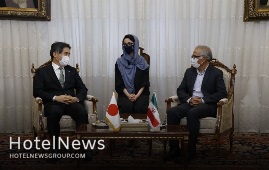
Japan’s Ambassador to Tehran Kazutoshi Aikawa whose country closely cooperates with Iran on Urmia Lake expressed content on Tuesday to see the lake being restored. In a meeting with Deputy Governor-General of East Azarbaijan Province, Aikawa said that he had travelled to the province in coordination with the United Nations Development Programme (UNDP) to see the process of implementing Urmia Lake restoration programs. Referring to the cooperation of Japan International Cooperation Agency (JICA) with the restoration program, the ambassador said that good efforts have been done and he was pleased to see the lake is being restored. He said that East Azarbaijan Province has good capacities of tourism and Japan is very interested in expanding tourism ties with the northeastern Iranian province. UNDP representative in Iran Claudio Providas said that the UN agency has had many cooperation programs with Japan to revive Urmia Lake and all programs are in progress in the best possible way. He stated that Iran was affected by climate change and this cannot be changed, but there can be programs to elevate local people’s awareness of the situation. He also said that the UNDP has implemented several programs in local communities around Urmia Lake and then it would be going to digitalize the marketing process for local agricultural products. East Azarbaijan Province Deputy Governor-General Javad Rahmati said that the province is one of the greatest provinces of Iran with over 4 million people living in the province. He also underlined that the province has close economic ties with neighboring countries Azerbaijan Republic, Armenia and Turkey. Alternative livelihood and changing agricultural pattern in the lands around Urmia Lake was among plans the current administration implemented, Rahmati said.
Create: Jul 7, 2021 Edit: Jul 7, 2021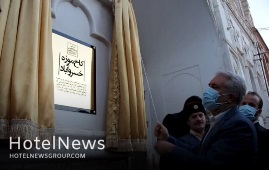
Iranian tourism minister Ali-Asghar Mounesan on Tuesday inaugurated a palace museum complex during his visit to Sanandaj, the capital of Kordestan province. Several other provincial and local officials, travel insiders, and cultural heritage experts attended the opening ceremony of Khosro-Abad Palace Museum, which is named after a centuries-old mansion located within the historical complex, CHTN reported. The palace complex has its roots in ancient Persia; however, it was more prosperous during the Qajar era (1789 to 1925). Kordestan also spelled Kurdistan, is bounded by the Iranian region of Azarbaijan on the north, and it borders Iraq on the west. The name Kordestan means “Country of the Kurds,” referring to the region’s principal inhabitants. After the Turkish invasion of Iran in the 11th century CE (Seljuk period), the name Kordestan was applied to the region comprising the northwestern Zagros Mountains. It was during the reign of the Safavid monarch, Shah Abbas the Great, that the Kurds rose to prominence, having been enlisted by Abbas I to help stem the attacks of the marauding Uzbeks from the east in the early 17th century.
Create: Jul 7, 2021 Edit: Jul 7, 2021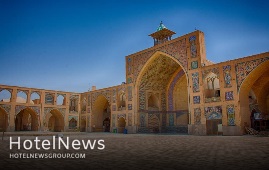
The lesser-known Hakim Mosque is a visually stunning monument in Isfahan, which travelers can pay a visit to near the centuries-old bazaar of the central Iranian city. The elegant mosque is not only a house of worship but also a public building serving a multiplicity of uses. It is a gathering place for prayers five times a day, an Islamic college, and an emergency shelter for travelers. Built-in the mid-17th century during the reign of Shah Abbas II, the mosque is named after its constructer who was a physician (“Hakim” in Persian). The mosque has no monumental entry, but five different minor entries. Frequently, a mosque is also used as a shortcut for another destination beyond the place of worship. Although the penetration of the mosque walls may take many forms, the primary destination is always the same. It is a courtyard that can be called a monumental space. The mosque also contains amenities, such as washrooms and toilets, for public use. Isfahan has long been nicknamed as Nesf-e-Jahan which is translated into “half the world”; meaning seeing it is relevant to see the whole world. In its heyday, it was also one of the largest cities in the region with a population of nearly one million. The cool blue tiles of Isfahan's Islamic buildings, and the city's majestic bridges, contrast perfectly with the encircling hot, dry Iranian countryside. The huge Imam Square, best known as Naghsh-e Jahan Sq. (literary meaning “Image of the World”), is one of the largest in the world (500m by 160m), and a majestic example of town planning. Built in the early 17th century, the UNESCO-registered square is punctuated with the most interesting sights in Isfahan. Modern Isfahan is now home to some heavy industry, including steel factories and a nuclear facility on its outskirts, however, its inner core wants to be preserved as a priceless gem.
Create: Jul 7, 2021 Edit: Jul 7, 2021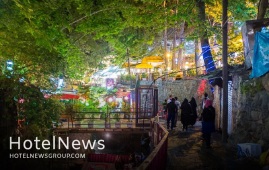
Summer has arrived in the northern hemisphere. It is great news for the sun-lovers flocking to beach resorts. But what about those who want to beat the heat? If cool weather and even cooler destinations are more to your taste, here are places around the Iranian capital where scorching heat will be nothing more than an afterthought! On the northeast side of Tehran, you can find plenty of cool townships and villages such as Fasham, Ahar, Meygoun, Oushan, Damavand, Cheshmeh A’la, and Garmabdareh to name a few. These destinations, in addition to the fresh air, fruit gardens, and lush gardens, are mostly equipped with proper recreational facilities and abundant local restaurants. On the east, Shahandasht waterfall may be the top of your agenda. The 50-meter cascade is situated off the Haraz road, which connects Tehran to the Caspian Sea in the north. Adjacent to the falls stands a Sassanid-era (224 CE to 651) stronghold, named Qaleh Malek-Bahman, which worth paying a visit. Tangeh Vashi, a popular mountainous resort that is known for having a pleasant, cool stream can be your other choice in the east direction. Tangeh Vashi is where many opt for walking for minutes to cool off. Situated some 15 kilometers west of Firouzkouh, Tangeh Vashi also bears a 19th-century bas-relief commissioned by Fath Ali Shah Qajar (r. 1797 – 1834) to commemorate hit hunts during summer excursions. Apart from the east, you can choose to stay in Kan and Sulaqan, which are riverside rural districts westward. Another cool spot may be colorful valleys across the popular Chalous road that embraces hectic rows of restaurants and coffee shops. The villages of Darband and Darakeh stand out when it comes to the north of Tehran. Those are amongst the most accessible cool destinations for relaxing and enjoying good Iranian cuisine, good weather even climbing easy mountain routes. Tajrish Square is a gateway to the rocky Darband where people hike upward trails. A few kilometers uphill from the atmospheric square the road ends, becoming a path winding up a narrow rocky valley, with water cascading down the slopes. The trail heads up into the hills past a picturesque succession of teahouses, restaurants, and fruit-conserve stalls. A visit to Darband can easily be combined with Sadabad Cultural-Historical Complex. You may exit the once royal complex via the top entrance and keep going up the hill and perhaps drink a cup of tea and puff on a qalyan (hobble-bobble) while submerged with a mountain-village feel. Also, Darakeh is where you can enjoy the lovely nature, listen to the sound of the river, and rest for a while. It is teeming with beautiful scenery, a good trekking path, and countless riverside restaurants and cafes. For people who want to do more, it is possible to hike towards the Tochal cable car and beyond. The bustling Iranian capital, however, never disappoints its travelers! Exploring this mesmerizing metropolis will transport you on a journey through more than 250 years of Iranian history – from the dazzling Golestan Palace and the adjacent Grand Bazaar to the majestic Borj-e Azadi (“Azadi Tower”) and the former U.S. embassy in downtown Tehran. The Iranian capital is also home to prestigious museums such as Treasury of National Jewels, Niavaran Palace Complex, National Museum of Iran, Glass & Ceramic Museum, Masoudieh Palace, Sarkis Cathedral, Tehran Museum of Contemporary Art, Carpet Museum of Iran, to mention but a few. Serene gardens, contemporary cafes, and traditional teahouses are other options where you can relax and enjoy all that is good about Tehran.
Create: Jul 1, 2021 Edit: Jul 1, 2021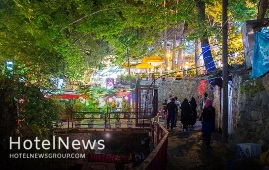
Summer has arrived in the northern hemisphere. It is great news for the sun-lovers flocking to beach resorts. But what about those who want to beat the heat? If cool weather and even cooler destinations are more to your taste, here are places around the Iranian capital where scorching heat will be nothing more than an afterthought! On the northeast side of Tehran, you can find plenty of cool townships and villages such as Fasham, Ahar, Meygoun, Oushan, Damavand, Cheshmeh A’la, and Garmabdareh to name a few. These destinations, in addition to the fresh air, fruit gardens, and lush gardens, are mostly equipped with proper recreational facilities and abundant local restaurants. On the east, Shahandasht waterfall may be the top of your agenda. The 50-meter cascade is situated off the Haraz road, which connects Tehran to the Caspian Sea in the north. Adjacent to the falls stands a Sassanid-era (224 CE to 651) stronghold, named Qaleh Malek-Bahman, which worth paying a visit. Tangeh Vashi, a popular mountainous resort that is known for having a pleasant, cool stream can be your other choice in the east direction. Tangeh Vashi is where many opt for walking for minutes to cool off. Situated some 15 kilometers west of Firouzkouh, Tangeh Vashi also bears a 19th-century bas-relief commissioned by Fath Ali Shah Qajar (r. 1797 – 1834) to commemorate hit hunts during summer excursions. Apart from the east, you can choose to stay in Kan and Sulaqan, which are riverside rural districts westward. Another cool spot may be colorful valleys across the popular Chalous road that embraces hectic rows of restaurants and coffee shops. The villages of Darband and Darakeh stand out when it comes to the north of Tehran. Those are amongst the most accessible cool destinations for relaxing and enjoying good Iranian cuisine, good weather even climbing easy mountain routes. Tajrish Square is a gateway to the rocky Darband where people hike upward trails. A few kilometers uphill from the atmospheric square the road ends, becoming a path winding up a narrow rocky valley, with water cascading down the slopes. The trail heads up into the hills past a picturesque succession of teahouses, restaurants, and fruit-conserve stalls. A visit to Darband can easily be combined with Sadabad Cultural-Historical Complex. You may exit the once royal complex via the top entrance and keep going up the hill and perhaps drink a cup of tea and puff on a qalyan (hobble-bobble) while submerged with a mountain-village feel. Also, Darakeh is where you can enjoy the lovely nature, listen to the sound of the river, and rest for a while. It is teeming with beautiful scenery, a good trekking path, and countless riverside restaurants and cafes. For people who want to do more, it is possible to hike towards the Tochal cable car and beyond. The bustling Iranian capital, however, never disappoints its travelers! Exploring this mesmerizing metropolis will transport you on a journey through more than 250 years of Iranian history – from the dazzling Golestan Palace and the adjacent Grand Bazaar to the majestic Borj-e Azadi (“Azadi Tower”) and the former U.S. embassy in downtown Tehran. The Iranian capital is also home to prestigious museums such as Treasury of National Jewels, Niavaran Palace Complex, National Museum of Iran, Glass & Ceramic Museum, Masoudieh Palace, Sarkis Cathedral, Tehran Museum of Contemporary Art, Carpet Museum of Iran, to mention but a few. Serene gardens, contemporary cafes, and traditional teahouses are other options where you can relax and enjoy all that is good about Tehran.
Create: Jun 28, 2021 Edit: Jun 28, 2021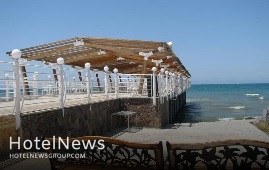
A new recreational pier will be constructed near the city of Noshahr, which is bounded by the Caspian Sea in northern Mazandaran province. Some 100 billion rials ($2.4 million at the official exchange rate of 42,000 rials per dollar) have been allocated to the project, which is to be carried out by the private sector, Noshahr’s tourism chief has announced. “Through the project, maritime tourism in the region will be reinforced and more tourists will be attracted,” IRNA quoted Mohammad Valipur as saying on Tuesday. There are also plans to construct twelve more recreational piers on the coastline of the city, but they have not yet found investors, the official added. Back in January, the head of Noshahr’s Fisheries Department Mostafa Rezvani said that constructing such piers could boost the infrastructure needed for developing fisheries investments. This capacity could also facilitate the activities of the fish farms in the coastal waters of the region, he noted. Last August, the construction of the first recreational pier in Mazandaran began in the city of Ramsar. Some 150 billion rials ($3.5 million) were allocated to the project, which aimed to enhance coastal and maritime tourism in the region. With a width of three meters and a length of 100 meters, the pier is being constructed by private investors in close collaboration with the provincial cultural heritage department. This pier is one of the 134 piers, which are decided to be built in the future across the province’s coastal strip, provincial tourism chief Mehran Hassani said. The project, which is planned to come on stream in one year, also includes restaurants, water sports space, and boat mooring. Stretched along the Caspian Sea and Alborz mountain range, Mazandaran is a popular destination for domestic holidaymakers and it is home to more than 3500 villages and rural areas.
Create: Jun 23, 2021 Edit: Jun 23, 2021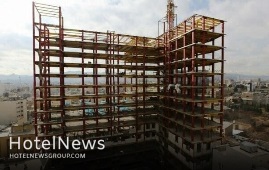
Upon their completion in the near future, these hotels will bring a significant change to the tourism industry in the central Iranian province, the provincial tourism chief has said. The official briefed on one of the accommodation projects, as an example, saying: “An investment of 2.6 trillion rials (about $62 million at the official exchange rate of 42,000 rials per dollar) has been made in the Zaferanieh Hotel, one of the under-construction projects,” the official added. “Covering an area of 1,500 square meters, the project is expected to generate 80 job opportunities directly,” he stated. “The hotel will have 90 rooms and will add 200 beds to the hospitality sector of the province,” he noted. The second-holiest city of the country after Mashhad, Qom is home to both the magnificent shrine of Hazrat-e Masumeh (SA) and the major religious madrasas (schools). Apart from sightseers and pilgrims who visit Qom to pay homage at the holy shrine, the city is also a top destination for Shiite scholars and students who come from across the world to learn Islamic studies at its madrasas and browse through eminent religious bookshops. The antiquity of Qom goes back to the Sassanid era (224 CE–651) and several historical mosques, mansions, and natural sceneries have been scattered across the city as well as towns and villages nearby.
Create: Jun 23, 2021 Edit: Jun 23, 2021
The first-ever agritourism permit in Minudasht county has been issued for a vast farm, which is located in the lush green Golestan province in northern Iran, Minudasht tourism director announced on Sunday. Such permits are granted to eligible farm owners in the country to launch agritourism businesses, aiming to set certain standards in a move to ensure the quality of their services. Setting up in an area of 40 hectares, the farm is expected to create jobs for 100 people,” Reza Pourmehdi said, CHTN reported. The farm includes a greenhouse, gardens of blueberry, olive, pears, peaches, cherries, nectarines, pomegranates, and it has sections for wheat cultivation, and animal breeding, fish farming, and beekeeping, the official explained. Agritourism is a relatively new branch of the travel industry in which tourists stay with local people in rural areas. Farm/ranch recreation refers to activities conducted on private agricultural lands, which might include fee-hunting and fishing, overnight stays, educational activities, etc. Experts believe that in addition to the customer services jobs, agritourism pays special attention to the production sector, saying agricultural tourism is much more important and practical than other branches of tourism because it creates a new chain and diversity in the field of production and services. Agritourism and nature-tourism enterprises might include outdoor recreation (fishing, hunting, wildlife study, horseback riding), educational experiences (cannery tours, cooking classes, or tea or coffee tasting), entertainment (harvest festivals or barn dances), hospitality services (farm stays, guided tours, or outfitter services), and on-farm direct sales (u-pick operations or roadside stands). Agritourism is a subset of a larger industry called rural tourism that includes resorts, off-site farmers' markets, non-profit agricultural tours, and other leisure and hospitality businesses that attract visitors to the countryside.
Create: Jun 21, 2021 Edit: Jun 21, 2021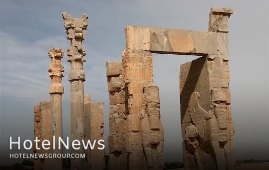
The bronze trumpets that once signaled the arrival of important foreign delegations to Persepolis, the ceremonial capital of the mighty Achaemenid Empire, may now be silent, but it is still possible to capture the sense of awe while visiting the colossal Gate of Xerxes. Built during the reign of Achaemenid king Xerxes I (r. 486 – 465 BC), who called this his Gate of All Nations, the pillared entrance is guarded by bearded and hoofed mythical figures in the style of Assyrian gate-guards. On arrival at Persepolis one is confronted by an imposing wall, completely smooth and plain, about 15 meters tall: this is the artificial terrace on which the palaces were built. This vast terrace of Persepolis, some 450 meters long and 300 meters wide, was originally fortified on three sides by a tall wall. The only access was from the monumental staircase, which leads to the Gate of All Nations. The gateway bears a cuneiform inscription in Old Persian, Neo-Babylonian, and Elamite languages declaring, among other things, that Xerxes is responsible for the construction of this and many beautiful wonders in Persia. Centuries of graffitists have also left their mark, including explorer Henry Morton Stanley. A pair of colossal bulls guarded the western entrance; two man-bulls stood at the eastern doorway. Engraved above each of the four colossi is a trilingual inscription attesting to Xerxes having built and completed the gate. The doorway on the south, opening toward the Apadana, is the widest of the three. According to sources, pivoting devices found on the inner corners of all the doors indicate that they must have had two-leaved doors, which were probably made of wood and covered with sheets of ornamented metal. Persepolis, also known as Takht-e Jamshid, whose magnificent ruins rest at the foot of Kuh-e Rahmat ("Mountain of Mercy"), was the ceremonial capital of the Achaemenid Empire. It is situated 60 kilometers northeast of the city of Shiraz in Fars Province. Persepolis was the seat of the government of the Achaemenid Empire, though it was designed primarily to be a showplace and spectacular center for the receptions and festivals of the kings and their empire. The royal city ranks among the archaeological sites which have no equivalent, considering its unique architecture, urban planning, construction technology, and art. The city was burnt by Alexander the Great in 330 BC apparently as revenge to the Persians because it seems the Persian King Xerxes had burnt the Greek City of Athens around 150 years earlier The immense terrace of Persepolis was begun about 518 BC by Darius the Great, the Achaemenid Empire’s king. On this terrace, successive kings erected a series of architecturally stunning palatial buildings, among them the massive Apadana palace and the Throne Hall (“Hundred-Column Hall”). This 13-ha ensemble of majestic approaches, monumental stairways, throne rooms (Apadana), reception rooms, and dependencies is classified among the world’s greatest archaeological sites.
Create: Jun 21, 2021 Edit: Jun 21, 2021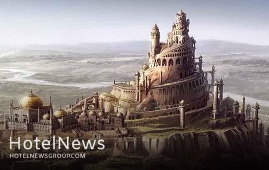
Perched on top of a steep hill, Alamut Castle was once sheltering the followers of Hasan-e Sabbah (1070–1124), the spiritual leader of a heretical Ismaili sect that spawned the word ‘Assassins’. Alamut Castle is situated on the northeastern side of Gazor Khan Village in the environs of Alamut, Qazvin province. While approaching the village, visitors should pass for nearly half along a narrow road surrounded by cherry and pomegranate orchards, until a mass of gray-brown rock looms from distance with fortifications perched atop a summit. The access path to the fortress starts about 700m beyond the village square and requires a steep 25-minute climb via a stairway. Meaning “eagle’s nest”, Alamut is a geographic region in the western edge of the Alborz Mountain range, between the dry and barren plain of Qazvin in the south and the densely forested slopes of the Mazandaran province in the north. Sabbah’s rule over Alamut is shrouded in mystery and enigma; partly because most Ismaili records of the era were destroyed by the Mongols while the writings of their detractors survived. In the early 1930s, British-Italian explorer and travel writer Freya Stark described her exploration of the place in her book “The Valleys of the Assassins”. In her celebrated 1934 travelogue, she recounts her hike up to Nevisar with mules that "seemed to be standing on their hind legs." These days Alamut is something of a great day out. Visitors can leave Tehran first thing in the morning for Qazvin, weave across the Alamut's first ramparts a few hours later, and, heading up-valley, reach Gazorkhan in time for a late lunch. Most visitors -- virtually all Iranian -- regard the gorgeous mountain-rimmed valley as an idyllic weekend retreat. Villages and hamlets dot its floor and sides; cornfields and rice paddies occupy parcels of land between ravines, and irregular terraced plateaus ruffle the valley's picturesque undulating terrain. Qazvin was once the capital of the mighty Persian Empire, under Safavids, from 1548 to 98. It is a major tourist destination with a wonderfully restored caravanserai-turned-arts precinct, some quirky museums, and a handful of decent eating options. For most travelers, Qazvin is also primarily the staging point for excursions to the famed castle of “Assassins”
Create: Jun 20, 2021 Edit: Jun 20, 2021